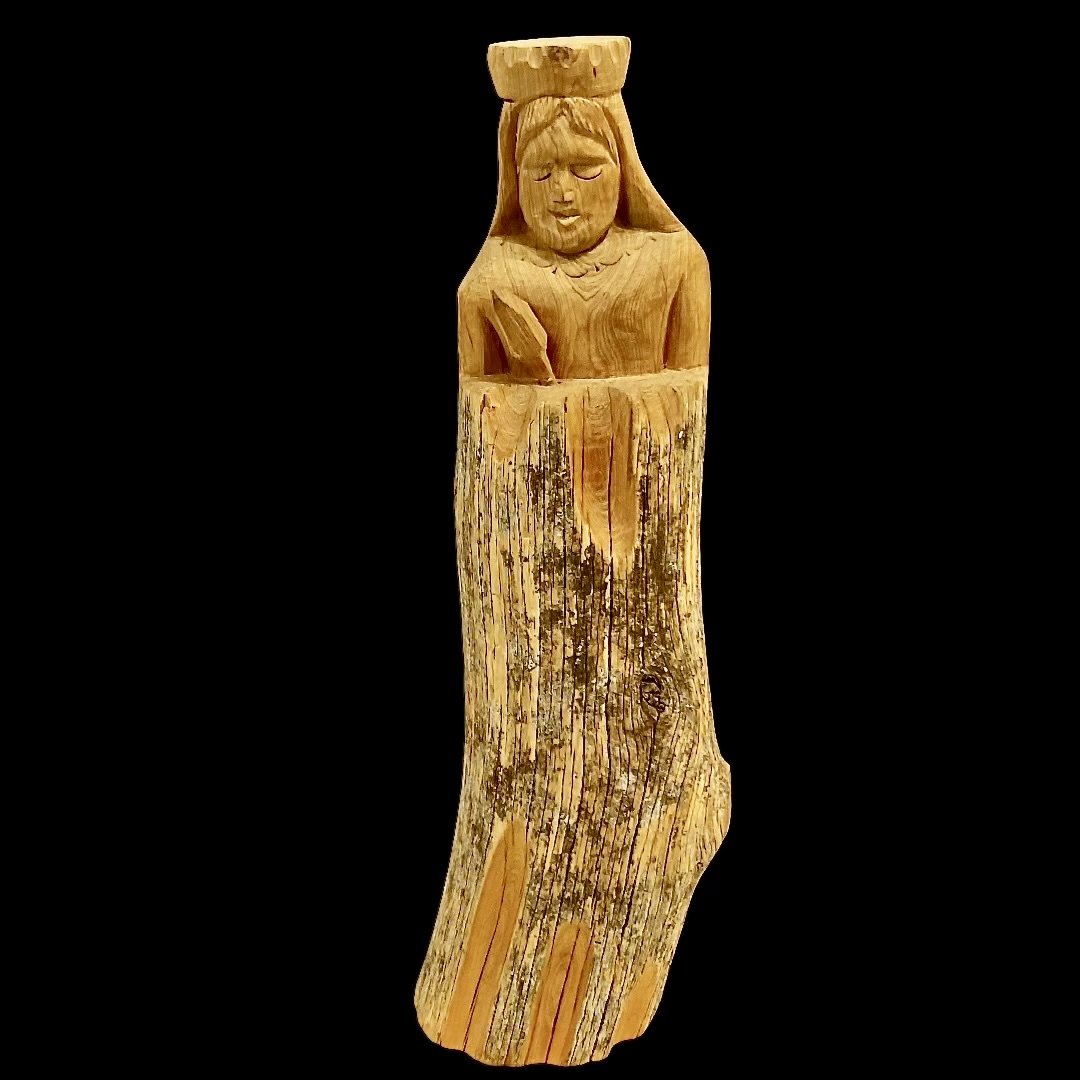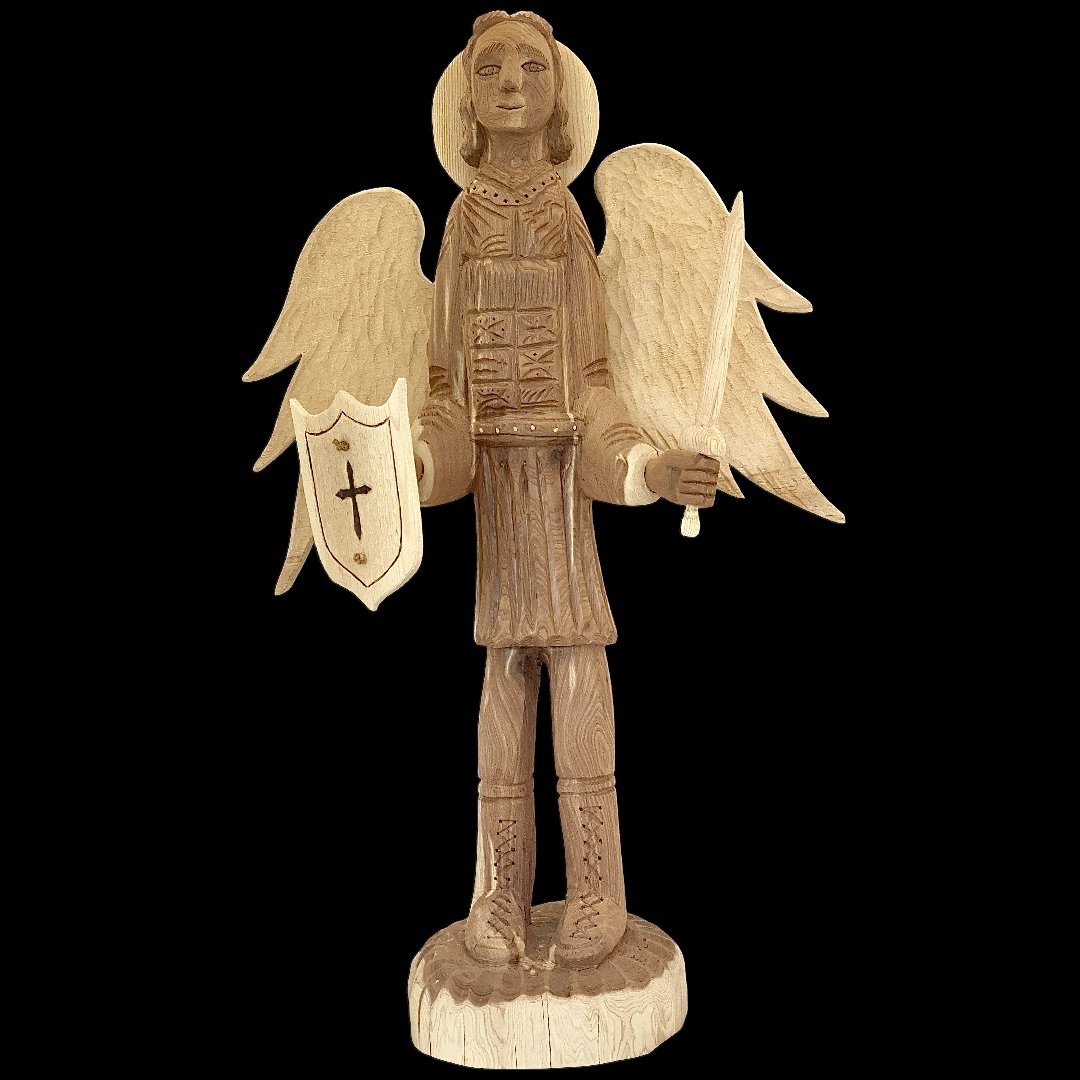- Sculpture
- Cedar Wood Santo by Chris White
Cedar Wood Santo by Chris White
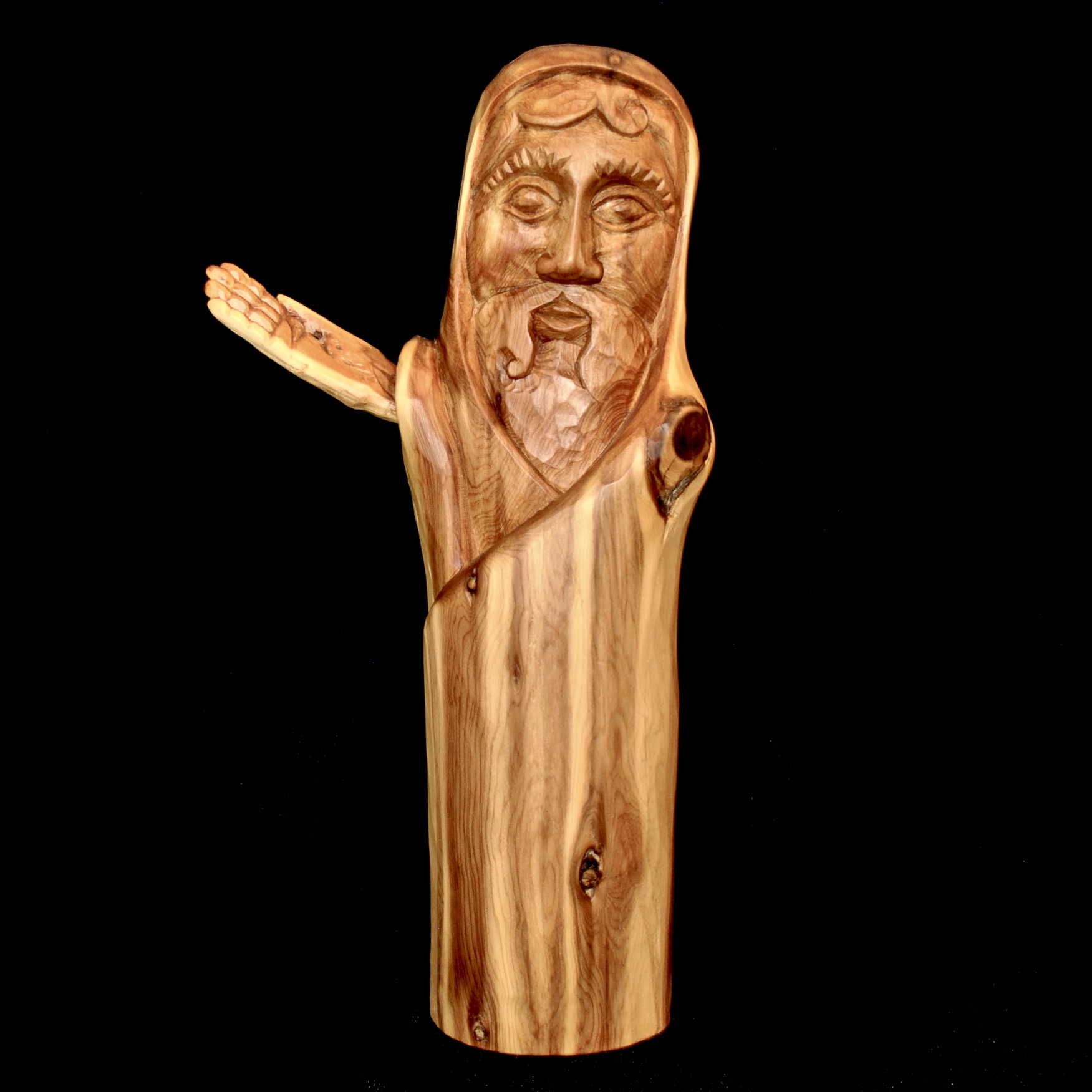

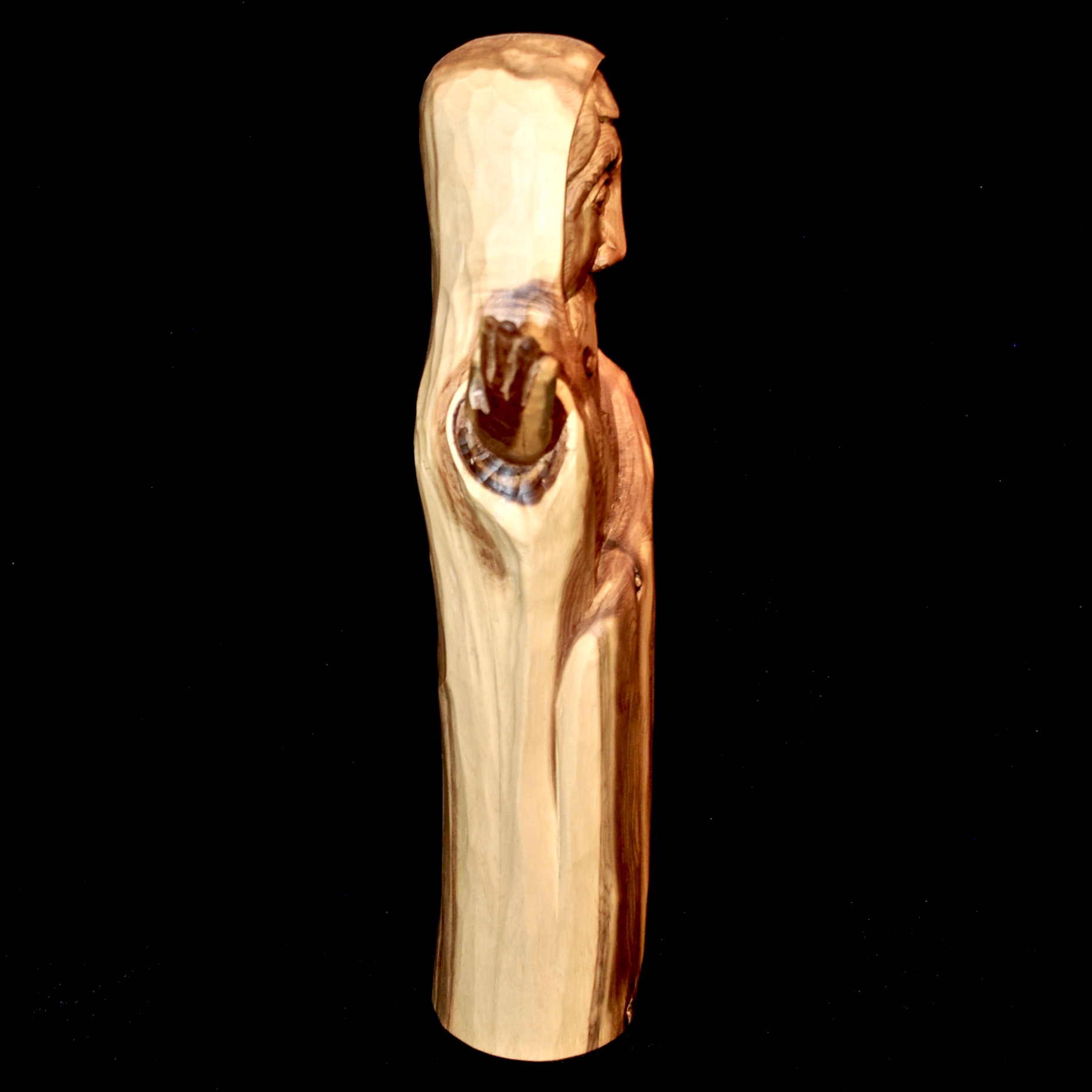
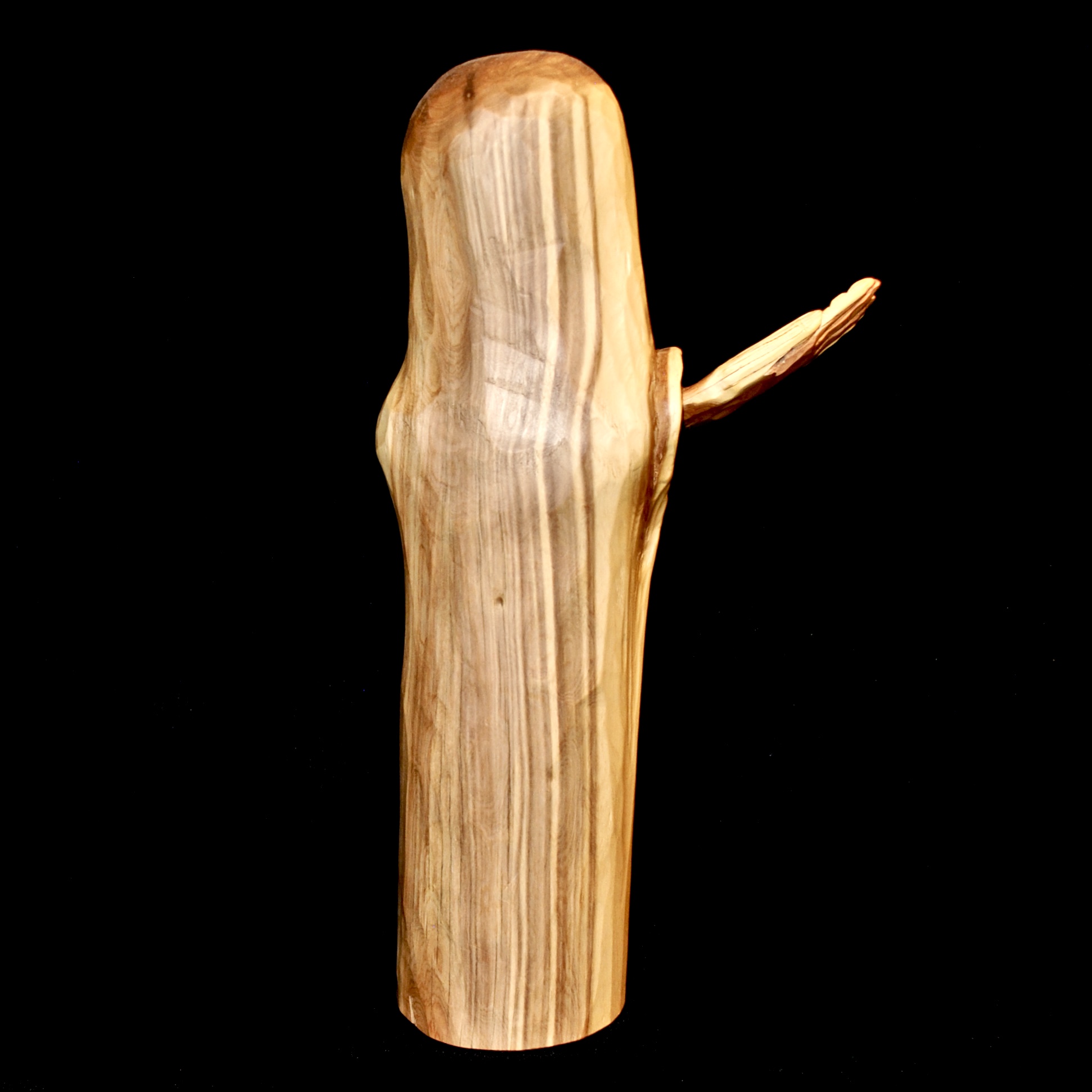

Cedar Wood Santo by Chris White
Hand-carved cedar wood Santo by Chris White of Taos, New Mexico, untitled.
Approx: 13.5" x 3." x 7.52.5"
Hand-carved cedar wood Santo by Chris White of Taos, New Mexico, untitled.
Approx: 13.5" x 3." x 7.52.5"
Chris White
Chris White is native to Taos, New Mexico. Born in 1975, Chris grew up in this very diverse culture. Taos offered the arts, the people and the majestic outdoors. Combined, these elements provided Chris with an appreciation for life and fine art. His time in the mountains gave Chris an awareness of wood and grain. In seventh grade Chris enrolled in carpentry class taking a blue ribbon in a junior high school art show. Bryans Gallery bought this piece and an association between Chris White and Bryans Gallery was formed. Chris’ artistic endeavors are numerous. When he was 18, Chris started building his own home on property he bought. The house was built from found objects and recycled timber. Chris graduated with high honors from the Institute of Culinary Education (I.C.E.) in New York, New York. Chris is currently a chef during winter months at the Hotel St. Bernard in the Taos Ski Valley. In the summer months Chris works on carving bultos (sculpture), doors, and furniture. He took first place at Taos Today Show in 2007. Currently, he teaches chip carving and relief at the University of New Mexico .
The Art of the Santero
In Northern New Mexico, the folk art of the Santero originated during the mid to late 1700s. Folk art blossomed out of a necessity — people who arrived from long and arduous journeys lacked decorations or ornaments for their homes and churches. The art flourished until the 1860s when French priests, new to the area, found this folk art to be distasteful and primitive. The folk art form was barely visible by the turn of the 20th century. It was revived with the WPA programs in the 1930s and later through the efforts of the Spanish Colonial Arts Society, beginning in the 1950s. Support of the Santero art form continues today.
A Santero is a painter and carver of images. Pine panels split from logs were called retablos. The Santero evened out the front and back panel and sanded the front to provide a smooth painting surface. Baked gypsum rocks were finely crushed, then mixed with water and glue made from rabbit skins and animal hooves. This mixture was painted on the front of the pine panel and allowed to dry. After sanding, the Santero would either sketch or paint free-hand an image of a saint. He gathered clays to make yellow ochre and reds, traded with neighboring pueblos for the color of azure, purchased imported indigo for blues, sumac berries for bright reds and created blacks from lampblack and charcoal. Other colors were adaptations of vegetable dyes that local weavers used, plus dried cochineal bugs. Brushes were made from available sources — yucca fibers, animal hairs and chicken feathers. A bulto, or image carved in the round, began as a piece of root of the cottonwood tree, or sometimes pine. If the figure was large, the head, hands and feet were carved separately and attached later using dowels and animal glue. After the bulto was gessoed, it was painted in the same fashion as a retablo. (Note: in Northern New Mexico, the local term cedar, actually refers to a variety of juniper tree.)
As Santeros became more proficient, altar screens called reredos were commissioned. Fine examples of the Reredos can be found in Northern New Mexico churches at Chimayo, Santa Cruz, Cordova, Truchas, Trampas, Guadalupe de Taos and Rancho de Taos. In Santa Fe, you will find a Reredos at the San Miguel Church.

